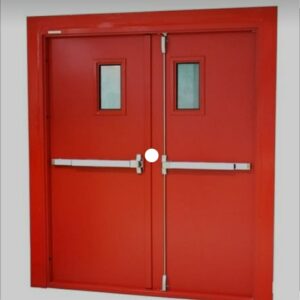Fire Hydrant
Color Coding of Fire Hydrants
Following NFPA standards, all fire hydrants are color-coded. These colours indicate the expected flow during the operation. Usually, the top caps of the fire hydrants are painted. The following table provides the common colors according to the flow.
Color-Coding Flow Meaning
Light Blue/Blue >1500 GPM Very good flow, suitable for industrial applications.
Green 1000-1500 GPM good for residential purposes
Orange 500-999 GPM marginally adequate
Red <500 GPM Low flow, inadequate
Table 2: NFPA color coding of fire hydrants
Codes and Standards of Fire Hydrants
The codes and standards that are used as guidelines for designing fire hydrant systems are: NFPA 1, NFPA 25, NFPA 291, AWWA, A112.21.3M, BS EN 14384, BS 750, DIN 3222, DIN EN 14339, AS 2419, FP-009, IS 3844, IS 13039.
Purpose and Uses of Fire Hydrants
The primary purpose of fire hydrants is to supply water for suppressing fire. However, they can be used for several secondary purposes like:
Line Flushing: Due to its high flow capability and easy operation, fire hydrants can be used to flush main distribution system lines.
Testing System: To test the hydraulic capacity of the distribution system, fire hydrants can be used.
Other Common uses: Fire hydrants are also frequently used as a water source for commercial construction work, sewer cleaning, street construction, street cleaning, etc.
Working of a Fire Hydrant
Fire hydrants with a variety of valves and connection points are seen in many places. In the event of a fire breakout, firefighters locate the fire hydrants, connect their hoses and then pump a large volume of pressurized water to put out the fire. A special pentagonal wrench is used to remove the valve cover of the hydrant. Then after attaching the hoses, the firefighters open the valve for the water to flow. They usually have a connection point to hook up a fire hose and a nut or bolt to turn on what will start the flow. Every fire hydrant is essentially just an attachment to the main water line. Underneath that connects the hydrant valve through a pipe called a riser. However, the normal hydrants don’t change the water pressure or flow in any way. They function as valves so firefighters can utilize the already present pressure in the water pipes. While all of this may sound simple the internal mechanics of a fire hydrant are a little more complex and can vary by region.








Reviews
There are no reviews yet.